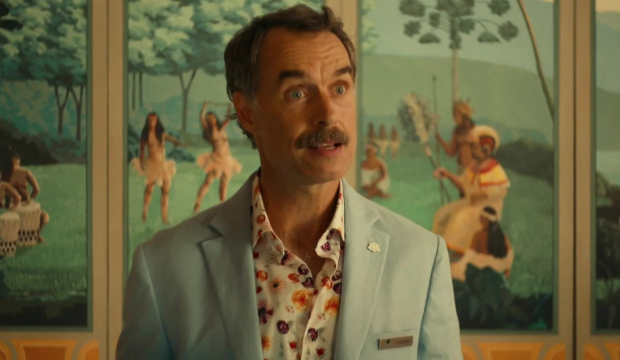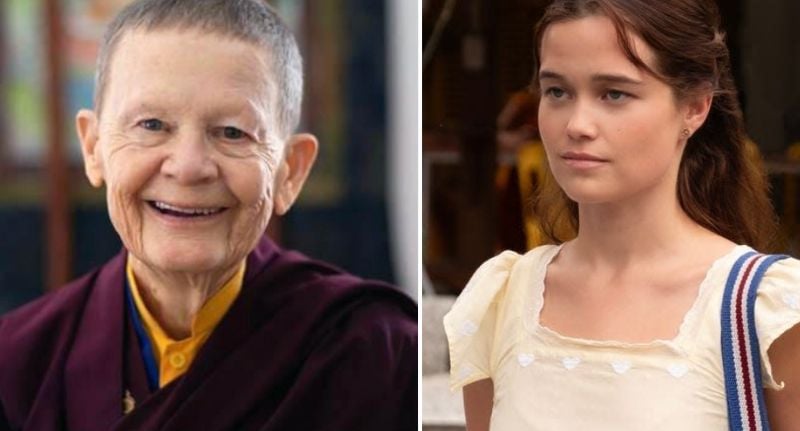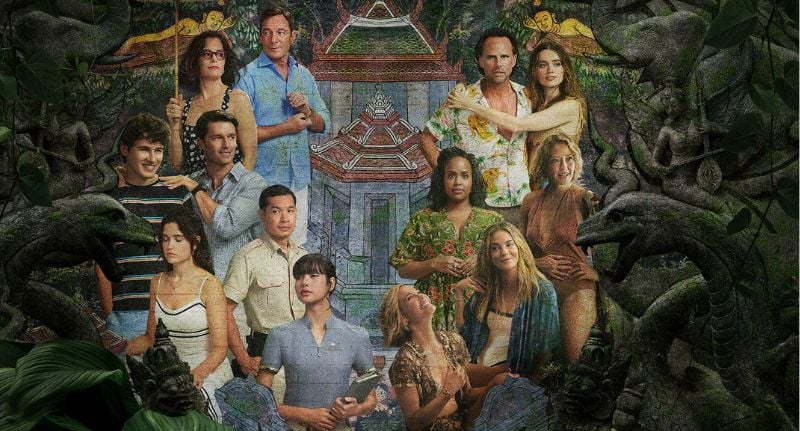With The White Lotus season three finale now just hours away, fans and gawkers seem consumed by one question: Who dies?
Honestly, who cares?
The obsession with the mystery has bred armchair Poirots everywhere. But Mike White is no Agatha Christie. And that’s the point.
Listen, I’m not discounting the narrative purpose of the season-opening death. It absolutely sets the tone and creates tension, providing much-needed structure. It gives the show propulsion, especially when character dynamics alone might not carry the weight. Without it, the experience could feel flat, less urgent, and ultimately less engaging.
But White’s real artistry doesn’t lie in the world of Knives Out, rather, its skill is in the mundane, everyday, and uncomfortably relatable interactions where he exposes the ugliness of beautiful people.
He cracks open the golden cogs that run society, only to show them as hollow, soulless, and, in the end, rotten. If you missed the allegory, it’s because White has embedded it so seamlessly: This is water. Only, unlike the David Foster Wallace poem, this water is polluted.
Look, I don’t want to turn this into some kind of literary-slash-sociological exegesis of the show (jokes, I do, but it’s my editor who reins me in). But we, the viewers, owe it to White to dig deeper.

Murray Bartlett as Armond in ‘The White Lotus’ season one.
Ego maniacs
Hints at the fragility of the ego in affluent society have been there from the start. In season one, hotel manager Armond (played by Murray Bartlett) quotes Alfred Lord Tennyson’s poem The Lotos-Eaters:
“Hateful is the dark-blue sky, vaulted o’er the dark-blue sea. Death is the end of life. Ah, why should life all labor be?”
In Greek mythology, the lotus-eaters lived on an island where the narcotic lotus flower erased memory and dulled ambition. Trapped in blissful apathy, they had no desire to return home. They were empty and soulless, yet never yearning for more, prisoners of a paradoxical paradise.
Season one introduced us to Rachel (played by Alexandra Daddario), an aspiring journalist who marries the wealthy, controlling Shane (played by Jake Lacy). Her choice hints at a longing for stability, even if it means shelving her career and identity in favour of financial security.
Rachel embodies the potential so many of us believe we harbour on the inside, only to one day wake up and realise we’ve sacrificed it all for comfort, for our place in society.
Did she die? No.
Did it matter? Also no.
Her sentence is her apathy and ultimate acceptance of her situation.

Alexandra Daddario as Rachel and Jake Lacy as Shane in ‘The White Lotus’ season one.
Adjusting the narrative
White shifts gears in season three, giving us Piper Ratliffe, who wants to walk away from her family’s wealth to join a monastery.
Sweet, prairie-dress-wearing Piper is initially seen as dull, but her moral clarity comes into focus as those around her implode: Her brothers’ chaos, her father’s greed, and her mother’s vanity. The deeper the indulgence, the greater the disconnect from self.
Many have likened Piper to Buddhist monk Pema Chödrön, whom White has openly admired.
In a 2011 interview with The New York Times, White discussed how his earlier show Enlightened was shaped by yoga, meditation, and Chödrön’s teachings. Like Piper, Chödrön came from privilege before renouncing it in search of something more meaningful.

(L-R) Buddhist monk Pema Chödrön and ‘The White Lotus’ season three character Piper Ratliffe (played by Sarah Catherine Hook).
Then there’s White’s ongoing fascination with mimetic desire, a theme running through all three seasons. French theorist René Girard argued that desire is not original, we want what others want. Sound familiar?
Season one gave us Olivia and her “best friend” Paula. Season two, Ethan and Cameron. Season three? Jacalyn and Laurie. Each character is so disconnected from self that they mimic others’ wants, incapable of articulating their own.
It’s an exaggerated reflection of modern culture, a toxic remix of Keeping Up with the Joneses for the social media age.
In the end, maybe White knew audiences would react this way, fixated on the shiny object (the death), rather than the murky, everyday banality shaping these characters’ lives.
So, who are the lotus eaters now?
Stream the final episode of The White Lotus season three on either BINGE or Max.
